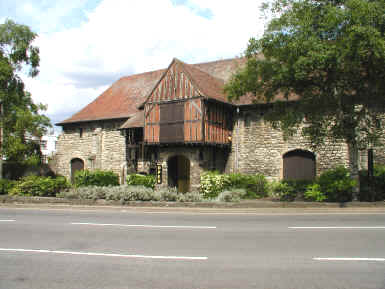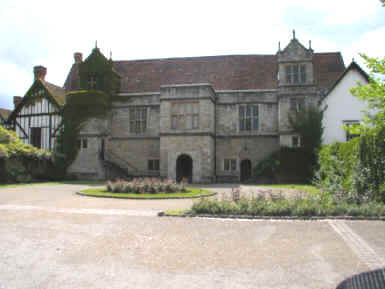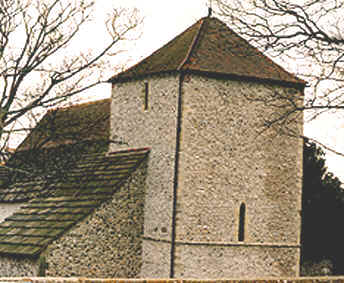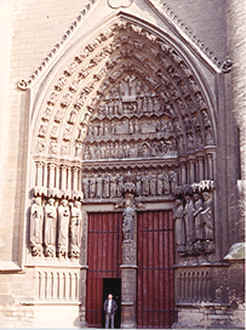The Medieval Church played a far greater role in Medieval England than the Church does today. In Medieval England, the Church dominated everybody’s life. All Medieval people – be they village peasants or towns people – believed that God, Heaven and Hell all existed. From the very earliest of ages, the people were taught that the only way they could get to Heaven was if the Roman Catholic Church let them. Everybody would have been terrified of Hell and the people would have been told of the sheer horrors awaiting for them in Hell in the weekly services they attended.
The control the Church had over the people was total. Peasants worked for free on Church land. This proved difficult for peasants as the time they spent working on Church land, could have been better spent working on their own plots of land producing food for their families.
They paid 10% of what they earned in a year to the Church (this tax was called tithes). Tithes could be paid in either money or in goods produced by the peasant farmers. As peasants had little money, they almost always had to pay in seeds, harvested grain, animals etc. This usually caused a peasant a lot of hardship as seeds, for example, would be needed to feed a family the following year. What the Church got in tithes was kept in huge tithe barns; a lot of the stored grain would have been eaten by rats or poisoned by their urine. A failure to pay tithes, so the peasants were told by the Church, would lead to their souls going to Hell after they had died.

Now a museum, this building was once a tithe barn serving Maidstone, Kent
This is one reason why the Church was so wealthy. One of the reasons Henry VIII wanted to reform the Church was get hold of the Catholic Church’s money. People were too scared not to pay tithes despite the difficulties it meant for them.
You also had to pay for baptisms (if you were not baptised you could not go to Heaven when you died), marriages (there were no couples living together in Medieval times as the Church taught that this equaled sin) and burials – you had to be buried on holy land if your soul was to get to heaven. Whichever way you looked, the Church received money.

Archbishop’s Palace in Maidstone, Kent
The Church also did not have to pay taxes. This saved them a vast sum of money and made it far more wealthy than any king of England at this time. The sheer wealth of the Church is best shown in its buildings : cathedrals, churches and monasteries.
In Medieval England, peasants lived in cruck houses. These were filthy, usually no more than two rooms, with a wooden frame covered with wattle and daub (a mixture of mud, straw and manure). No cruck houses exist now – most simply collapsed after a while as they were so poorly built. However, there are many Medieval churches around. The way they were built and have lasted for centuries, is an indication of how well they were built and the money the Church had to invest in these building.

This church in Rottingdean, East Sussex, is nearly 1000 years old. It was made of stone and built to last. It would have been much larger than a Medieval peasant’s cruck house.
Important cities would have cathedrals in them. The most famous cathedrals were at Canterbury and York. After the death of Thomas Becket, Canterbury Cathedral became a center for pilgrimage and the city grew more and more wealthy. So did the Church. Cathedrals were vast. They are big by our standards today, but in Medieval England they were bigger than all buildings including royal palaces. Their sheer size meant that people would see them from miles around, and remind them of the huge power of the Catholic Church in Medieval England.

This entrance to Amiens Cathedral in France shows just how vast cathedrals were. The doors alone are over 20 feet tall, while the ‘porch’ which surrounds it makes this doorway nearly 60 feet tall; taller than many houses now.
To work on the building of a cathedral was a great honour. Those who did the skilled work had to belong to a guild. They would have used just the most basic of tools and less than strong scaffolding to do the ceilings. However, if you were killed in an accident while working in a cathedral or a church, you were guaranteed a place in Heaven – or so the workers were told.
Related Posts
- Medieval monasteries were the wealthiest land owners in Medieval England - more so than any medieval king. Medieval monasteries dominated the church in Medieval England…